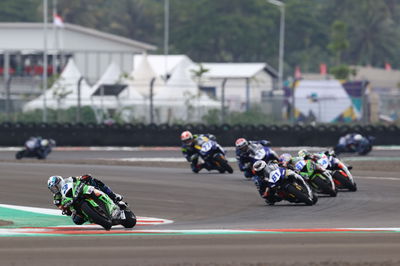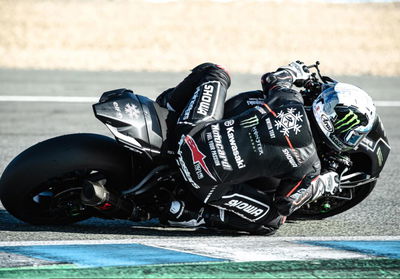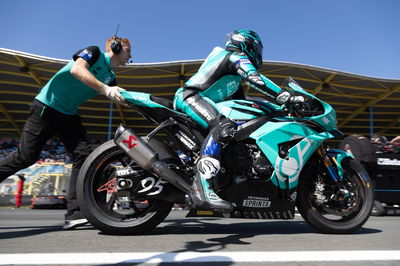New technical regulations for 2022 WorldSSP season confirmed

New technical regulations have officially been confirmed ahead of the 2022 WorldSSP championship.
The first big change sees manufacturers such as Ducati and Triumph return to the series for the first time since 2007 and 2012 respectively, while MV Agusta now have two instead of one bikes homologated for the 2022 season along with Suzuki and their GSX-R750.
Ducati have six teams (seven riders) confirmed which is the most of any new manufacturer. The seven riders which include Nicolo Bulega, Oli Bayliss, Federico Caricasulo, Federico and Filippo Fuligni, Maximilian Kofler and Raffaele De Rosa, who remains with Orelac VerdNatura after they switched from Kawasaki machinery, will be riding the newly-homologated Ducati Panigale V2 955cc bike.
Triumph has just one team which includes Hannes Soomer and former Moto2 rider Stefano Manzi - both riders will compete on the Street Triple 765. The two MV Agusta machines that can be used include the F3 800 and F3 Superveloce.
In regards to how these motorcycles will provide equal racing due to the difference in power compared to WorldSSP regulars Yamaha and Kawasaki, Dorna have announced several factors that will be taken into account and that it can change every three race weekends in order to bring racing closer.
An official statement said: "So that not one bike has a clear advantage over the opposition, a range of factors will be considered as part of the Dorna WorldSBK Organization (DWO) algorithm. This will take into account aspects such as lap time in comparison to other competitors, speed traps, race results and more.
"This can be changed every three rounds if needed, to equalise performance further and the balance will be weighted to the data collected during the previous six events. The method of balancing will be raise or reduce the power potential of the machine’s %, with the FIM and the DWO reserving the right to update the balance at their discretion in the case of imbalance.
"The initial balance is being calculated after intensive dyno tests with many DWO partners involved. To keep things equal, the tests are all taking place using the Panta control fuel and Motul 300v lubricant. Tests are taking place at RE engineering all overseen by the FIM and Mectronik. Balancing factors may be updated at the end of each season."
For the WorldSSP ‘next generation’, new engine regulations have also been applied.
No team or manufacturer looking to modify their engine can do so unless the changes are specified in the 'Eligible Parts for Competition List'.
Manufacturers such as Yamaha who use an R6 (600cc) will have one engine every 2.5 rounds, while those with a bike in the 601cc - 799cc range will have one engine over three rounds. Finally MV Agusta and Ducati will have one engine over 3.5 rounds due to being over the 800cc mark.
A full list of changes regarding rev limits, weight and tyres was also provided by WorldSBK officials and can be found below:
Rev limits: "All rev limits for each motorcycle are to be confirmed after the balance tests have been complete and following close monitoring of on-track performance."
Weight: "For 2022, a combined weight limit will be used in WorldSSP, with the minimum bike-rider combined weight being 242kg. In the same way that World Supersport 300 works, there will be a soft maximum weight and a hard minimum weight for the bikes.
"Should the soft maximum weight be achieved or exceeded, then the combined minimum weight doesn’t need to be reached. The motorcycle on its own must never be below the hard minimum weight; there is no tolerance on this and after the race, the bike and rider will be weighed in racing condition, and nothing may be added."
Tyres: "There’ll be an extra element on tyre usage this year as World Supersport teams will have less to use; in 2021, teams had 17 tyres to use across the weekend. In 2022, they will have 15: seven fronts and eight rears, one less at each end compared to 2021. Pirelli will supply a minimum of two compounds for both the front and rear tyres, with a minimum allocation of six of each compound."











